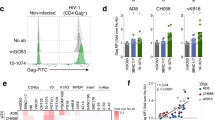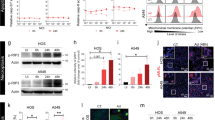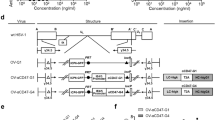Abstract
TARGET cells acutely infected with herpes simplex virus (HSV) can be destroyed by human blood mononuclear cells (MC) in the presence of IgG antibody to HSV1–3, a process termed antibody-dependent cellular cytotoxicity (ADCC). The major effector cell which mediates this reaction is a K cell; it possesses surface Fc receptors which permit attachment to IgG antibody-sensitised target cells4–6, although the way in which the lethal hit is delivered is poorly understood. For an immune cytolytic mechanism to be maximally effective in limiting the spread of virus in a host, it should be able to destroy the infected cell at an early stage in the viral maturation cycle, before infectious viral progeny can be produced. This requirement seems to be of particular importance for viruses such as HSV, which can avoid exposure to the neutralising antibody in extracellular fluid by spreading from cell to cell across intercellular bridges7,8. In this report, we demonstrate that the ADCC mechanism can recognise viral surface antigens as early as 2 h after cells are infected with HSV and can produce target cell death by 3 h after infection (PI), well in advance of the first appearance of both viral progeny and the susceptibility of infected cells to lysis by antibody and complement (AbC).
This is a preview of subscription content, access via your institution
Access options
Subscribe to this journal
Receive 51 print issues and online access
$199.00 per year
only $3.90 per issue
Buy this article
- Purchase on Springer Link
- Instant access to full article PDF
Prices may be subject to local taxes which are calculated during checkout
Similar content being viewed by others
References
Shore, S. L., Nahmias, A. J., Starr, S. E., Wood, P. A., and McFarlin, D. E., Nature, 251, 350–352 (1974).
Rager-Zisman, B., and Bloom, B., Nature, 251, 542–543 (1974).
Shore, S. L., Black, C. M., Melewicz, F. M., Wood, P. A., and Nahmias, A. J., J. Immun., 116, 194–201 (1976).
Larsson, A., and Perlmann, P., Int. Archs. Allergy, 43, 80–88 (1972).
Shore, S. L., Melewicz, F. M., Milgrom, H., and Nahmias, A. J., in The Reticulo-endothelial System in Health and Disease (edit. by Reichard, S. M., Escobar, M. R., and Friedman, H.), (Plenum, New York, in the press).
Romano, T. J., and Shore, S. L., Fedn Proc., 35, 474 (1976).
Hoggan, D. B., Roizman, B., and Roane, P. R., Am. J. Hyg., 73, 114–122 (1961).
Christian, R. T., and Ludovici, P. P., Proc. Soc. exp. Biol. Med., 138, 1109–1115 (1971).
Rosenthal, J., Hayashi, K., and Notkins, A. L., J. gen. Virol, 18, 195–199 (1973).
Lodmell, D. L., Niwa, A., Hayashi, K., and Notkins, A. L., J. exp. Med., 137, 706–720 (1973).
Perlmann, P., Perlmann, H., and Wigzell, H., Transplant. Rev., 13, 91–114 (1972).
Author information
Authors and Affiliations
Rights and permissions
About this article
Cite this article
SHORE, S., CROMEANS, T. & ROMANO, T. Immune destruction of virus-infected cells early in the infectious cycle. Nature 262, 695–696 (1976). https://doi.org/10.1038/262695a0
Issue Date:
DOI: https://doi.org/10.1038/262695a0
This article is cited by
Comments
By submitting a comment you agree to abide by our Terms and Community Guidelines. If you find something abusive or that does not comply with our terms or guidelines please flag it as inappropriate.



